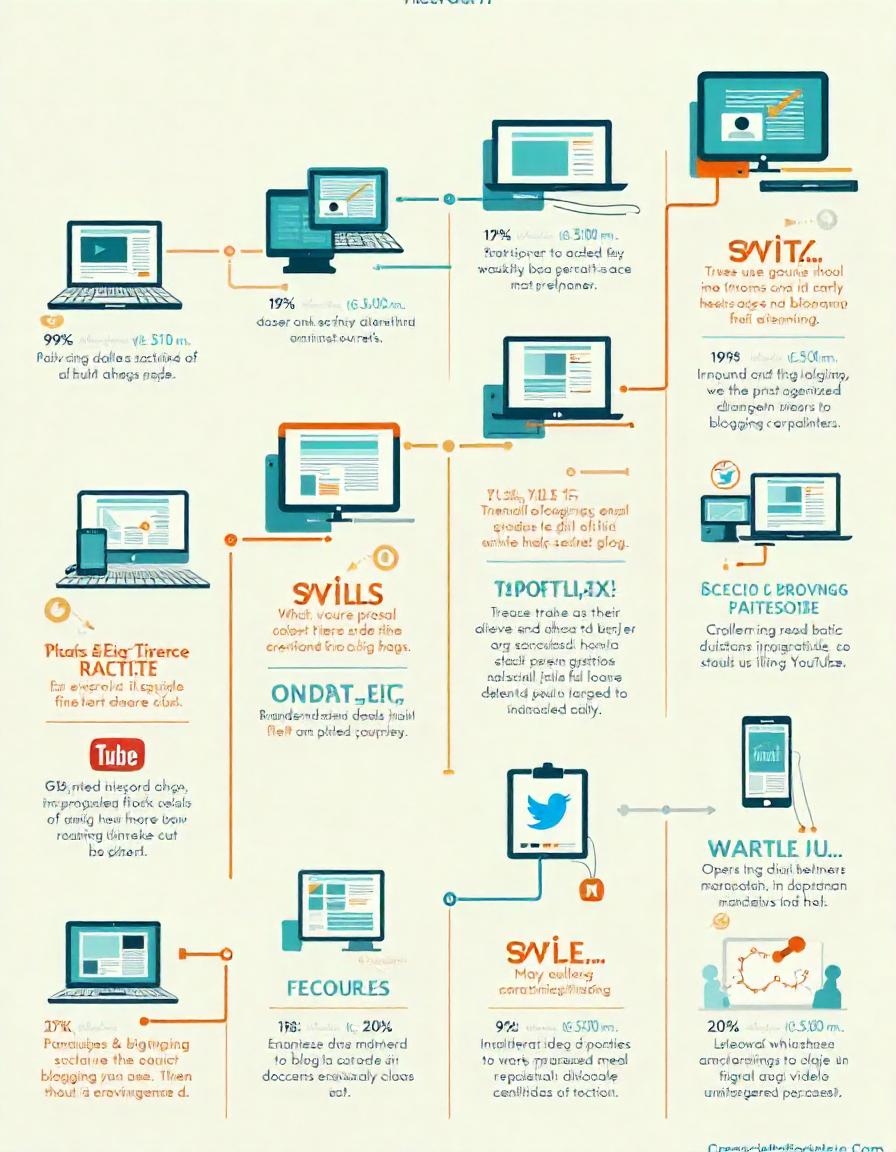Who Made Blogging: The Evolution Of An Internet Phenomenon
Blogging, a practice now synonymous with online expression, storytelling, and digital influence, has become an integral part of the internet landscape. But how did it start, and who were the pioneers behind it? The story of blogging begins in the early days of the internet and continues to evolve as technology and content platforms grow. Let’s take a look at the history, the key innovators, and the trends that have shaped blogging as we know it today.
How to Earn Money Online – The Ultimate Guide to Financial Freedom!
The Beginnings of Blogging: Online Journals and Weblogs
The roots of blogging can be traced back to the mid-1990s, when the internet was just starting to gain widespread popularity. In 1994, Justin Hall, a student at Swarthmore College, began sharing his personal experiences and thoughts online through links.net, a simple website that he updated regularly with observations and stories. While it didn’t look anything like a modern blog, Hall’s online diary is often considered one of the earliest forms of blogging.
By 1997, Jorn Barger, another early internet pioneer, created the term “weblog” to describe the act of “logging the web.” His site, Robot Wisdom, was dedicated to linking interesting content he found across the internet along with his own insights, combining commentary and curation, two core aspects of what would become blogging.
The First Blogging Platforms and the Rise of the Term “Blog”
In 1999, the term “blog” emerged when Peter Merholz, an influential internet entrepreneur, humorously shortened “weblog” to “we blog” on his website. This linguistic shift helped popularize the word and marked the beginning of “blog” as we know it.
The late 1990s also saw the launch of several blogging platforms that made it easy for anyone to start a blog, regardless of technical expertise. Two key platforms emerged:
- LiveJournal (1999) – Founded by Brad Fitzpatrick, LiveJournal was initially a way for Fitzpatrick to keep his friends updated on his life. The platform quickly became popular for its community-building tools, enabling users to interact with each other and form interest-based groups.
- Blogger (1999) – Developed by Pyra Labs, Blogger was one of the first platforms to make blogging accessible to the masses. It offered a user-friendly interface that simplified posting content online. In 2003, Google acquired Blogger, further enhancing its reach and influence.
How to Earn Money Online – The Ultimate Guide to Financial Freedom!
WordPress and the Growth of Blogging as a Professional Medium
In 2003, WordPress was launched by Matt Mullenweg and Mike Little. Initially a simple tool for online journaling, it grew to become a powerful content management system (CMS). Today, WordPress powers over 40% of websites globally, offering bloggers greater flexibility in design, functionality, and control over their content.
Around this time, blogging also began to shift from personal journaling to a professional medium. Bloggers started sharing expertise on a wide range of topics, from travel and fashion to tech and finance. The advent of search engines like Google allowed blogs to reach broader audiences, and soon, blogging became a legitimate career path.
The Social Media Era and Microblogging
As social media platforms like Facebook, Twitter, and Instagram gained popularity, new forms of blogging emerged. Microblogging, a term describing shorter, frequent updates often done through social media platforms, became a popular way to share thoughts in real time. Twitter, in particular, became known as a microblogging platform, with its 280-character format providing quick insights and updates.
This shift marked a change in how people consumed and shared content, with social media offering a more immediate, visual alternative to traditional blogging. However, many bloggers still use these platforms to drive traffic back to their main blogs, creating a symbiotic relationship between blogs and social media.
How to Earn Money Online – The Ultimate Guide to Financial Freedom!
Blogging in the 2020s: A Diverse Digital Landscape
Today, blogging has become a vast and diverse landscape. People blog for many reasons: as a hobby, to build an online portfolio, to make a side income, or as a full-time profession. Platforms like Medium, Substack, and Ghost offer new options for creators to share their work, often in more specialized formats. Substack, for example, allows writers to create subscription-based newsletters, catering to audiences who are willing to pay for in-depth content.
With the rise of video content, vlogging (video blogging) on platforms like YouTube and TikTok has also grown, merging blogging’s storytelling roots with visual media.
Who Made Blogging? A Collective Effort
It’s difficult to attribute blogging’s creation to a single person or event. Instead, it was the collective effort of early pioneers like Justin Hall, Jorn Barger, Peter Merholz, and platform developers like Brad Fitzpatrick, Evan Williams, and Matt Mullenweg who laid the groundwork.
How to Earn Money Online – The Ultimate Guide to Financial Freedom!
Today, blogging continues to evolve, adapting to changing technology and shifting audience preferences. From personal diaries to professional websites, it’s a medium that allows people to share their stories, connect with others, and create opportunities. Blogging isn’t just an online activity; it’s a powerful form of self-expression, community-building, and a valuable career path. Whether it’s done through words, videos, or podcasts, the essence of blogging remains the same: sharing knowledge, stories, and ideas with the world.







